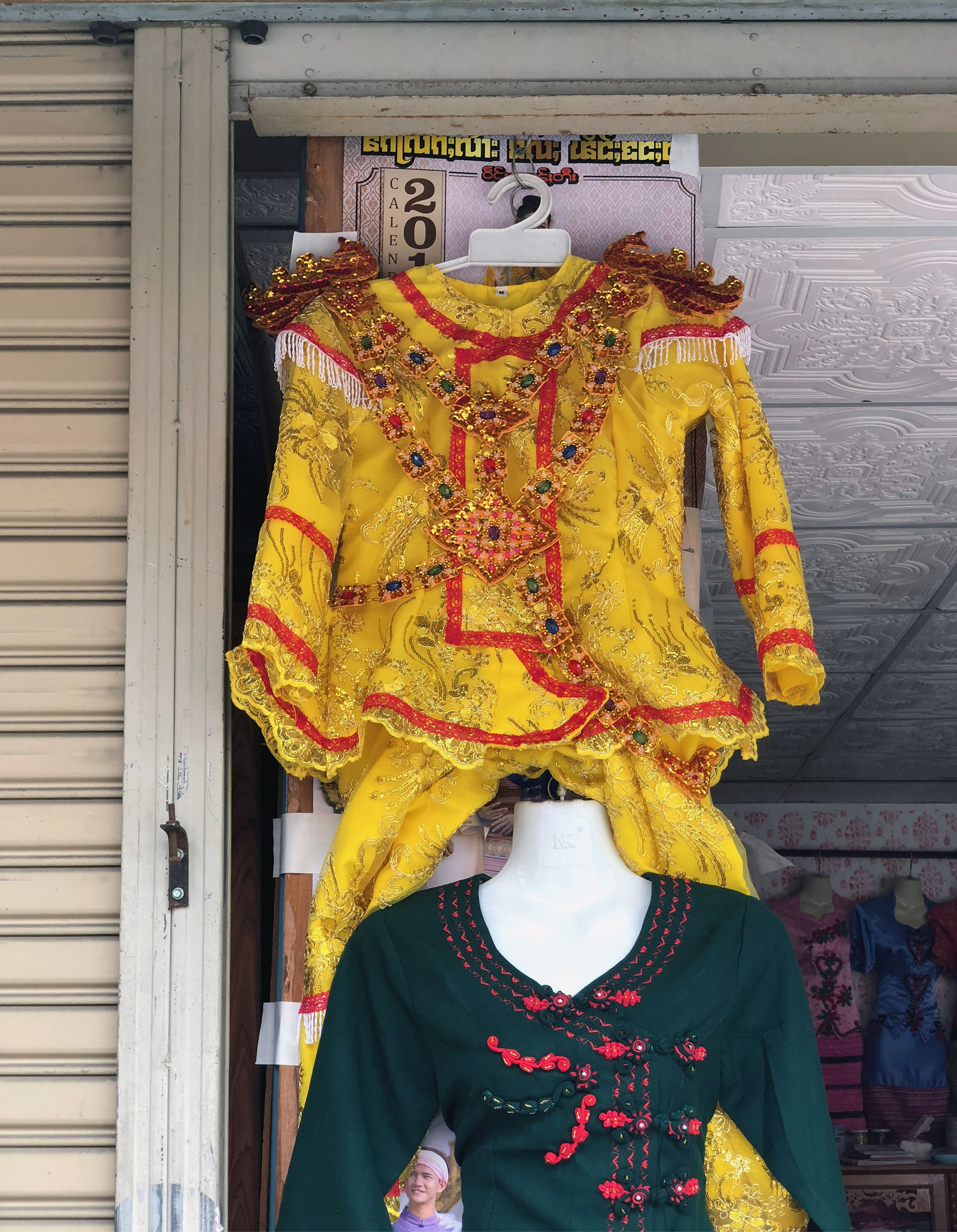The Suvannahong (Suvannahamsa Jataka) is illustrated on the opposite wall from the Sang Thong story. This time the Bodhisattva is Brahamdatta, son of the King of Benares. He has many adventures as he traverses the whole of the Jambudvipa with the aid of a flying machine resembling a golden hamsa (a kind of mythical wild goose), hence the name of the Jataka.*
*Thai Painting by Jean Boisselier
Image from Viharn Lai Kham’s wall opposite the Sang Thong saga. A prince and his rescued princess do battle with an army of ogres in the forest.
The Shinbyu Ceremony
The Shan people of northern Thailand have a ceremony that marks the initiation of young boys into adults. It is also known as the Crystal Sons ceremony. Every Burmese Buddhist boy has to enter the Buddhist order of monks before he grows to manhood. As a part of the ceremony alms are offered to the monks, and friends are invited to the reception given by the parents of the boy. The boy is mounted on a horse or rides on the back of his father.
Why is the boy dressed as a prince or king?
The usual answer is that the boy is following the path of purity followed by Prince Siddhartha, who forsook his luxurious life of a prince to become a recluse and later the Buddha. The boys is, in effect, enacting the scene of Prince Siddhartha’s renunciation of the world. But this explanation is merely an afterthought meant to give a Buddhistic basis to a pre-Buddhistic ceremony.
Store front selling a costume of a prince for the Shinbyu ceremony in Chiang Mai.
The word Shin means ‘monk’, but it can also mean ‘lord’ or ‘king’. The phrase Shinbyu means ‘to make a monk”, but it can also mean "‘to make a king’. The boy who is going to be initiated is called a Shin-luang, which means ‘he who would be a monk’, but it can also mean ‘ he who would be a king’.
In Thailand this ceremony is called Poy Sang Long or “Crystal Sons”.
In Burmese society, although the king and his officials were at the top of the social structure, everyone could hope to be king one day, and as the king’s officers constituted a nobility by talent and not by birth, even the humblest peasant, if he had the ability, could hope to become an official of the highest rank. Burmese folk-lore is full of stories of poor boys becoming kings, and chronicles mention many instances of persons ‘not of royal bone’ becoming kings.*
*Folk Elements in Burmese Buddhism>Initiation Ceremonies by Muang Htin Aung




